Learn everything you need to know about zesting lemons, limes, and oranges with this comprehensive Guide to Citrus Zest. Learn about essential tools needed, the techniques to avoid the bitter pith, and how to maximize its flavor potential.
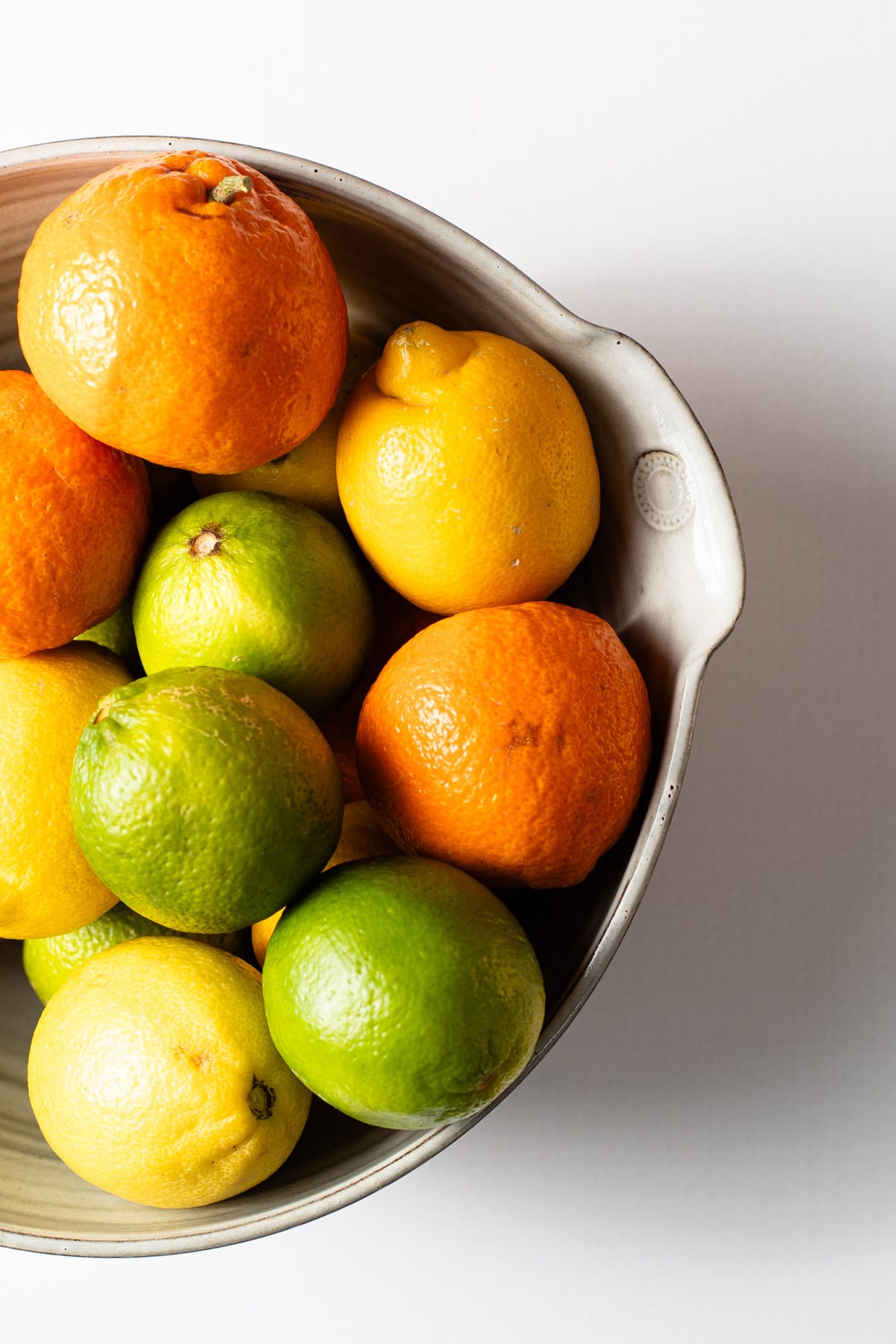
Want to save this recipe?
Enter your email & I'll send it to your inbox. Plus, get weekly updates from me!
Citrus fruit zest is the colorful, flavorful layer of the peel that can be found in lemons, limes, oranges, grapefruits, and other citrus fruits. This layer is rich in essential oils, which give the fruit its unique aroma and taste, and is the primary ingredient called for in most citrus recipes (see: Creamy No-Bake Lemon Pie, Key Lime Pie and Soft Italian Orange Drop Cookies). When a recipe calls for the zest of a lemon, it means that you should grate or finely peel the outer colored layer of the lemon's peel. All of this may seem straightforward, but if you’ve never zested a lemon or lime before you may have some questions!
This Guide to Zesting Citrus will go into some of the finer points of this technique so you can effectively use this flavor-packed ingredient in your cooking and baking (like this Orange Creamsicle Pie and Coconut Lime Tart).
Jump to:
Where is the Zest Located on the Fruit?
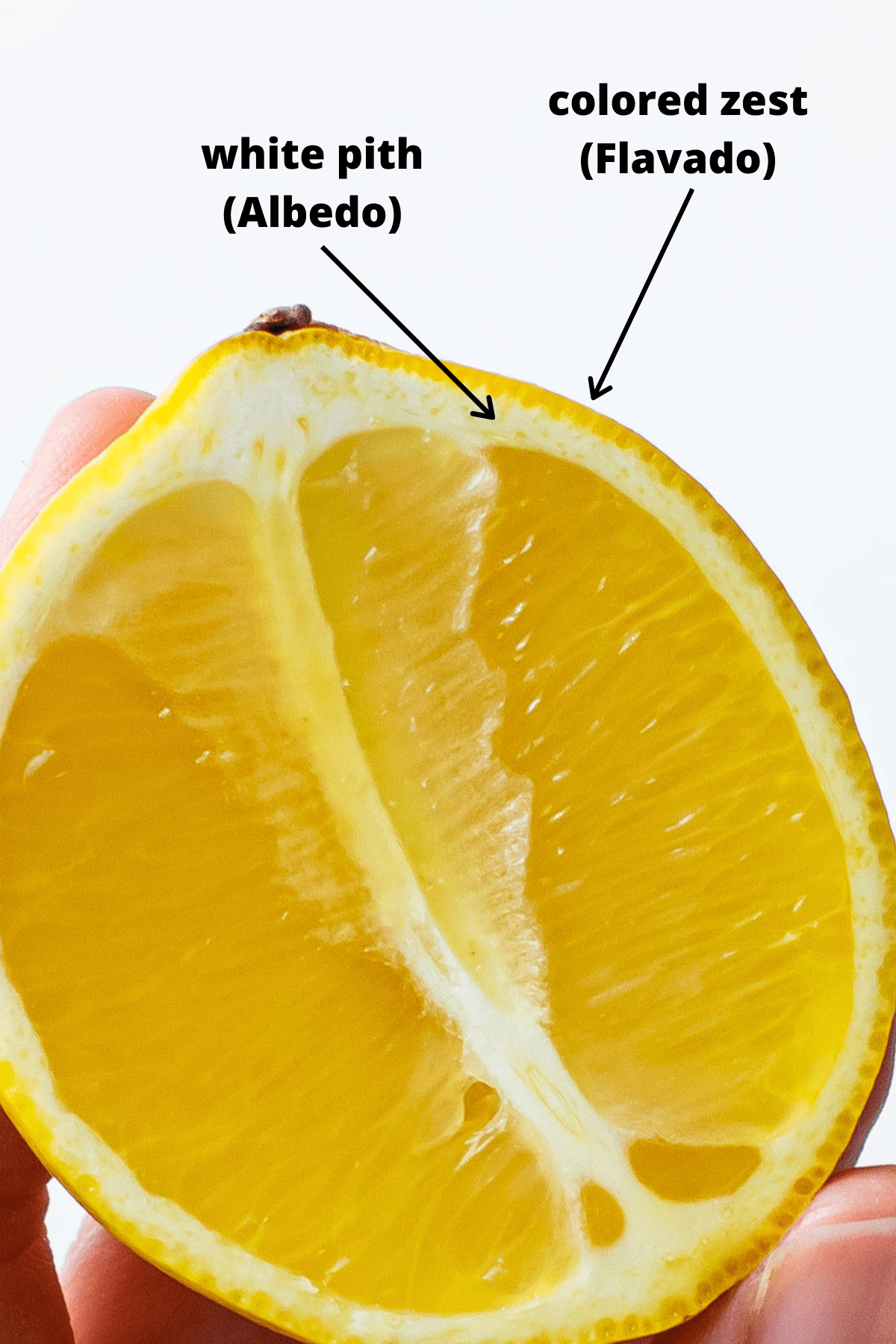
Before delving into the techniques of zesting, let's examine the zest itself. The outer layer of any citrus fruit comprises two distinct layers of peel.
The zest, technically known as the flavado, is situated on the thin outer-colored skin of the fruit..This is where the natural essential oils are located; generally speaking, all the flavor is found here!
Underneath the zest of fruit lies a bitter layer called the pith (or, more technically, the albedo), which is thick and white. It should be avoided when zesting.
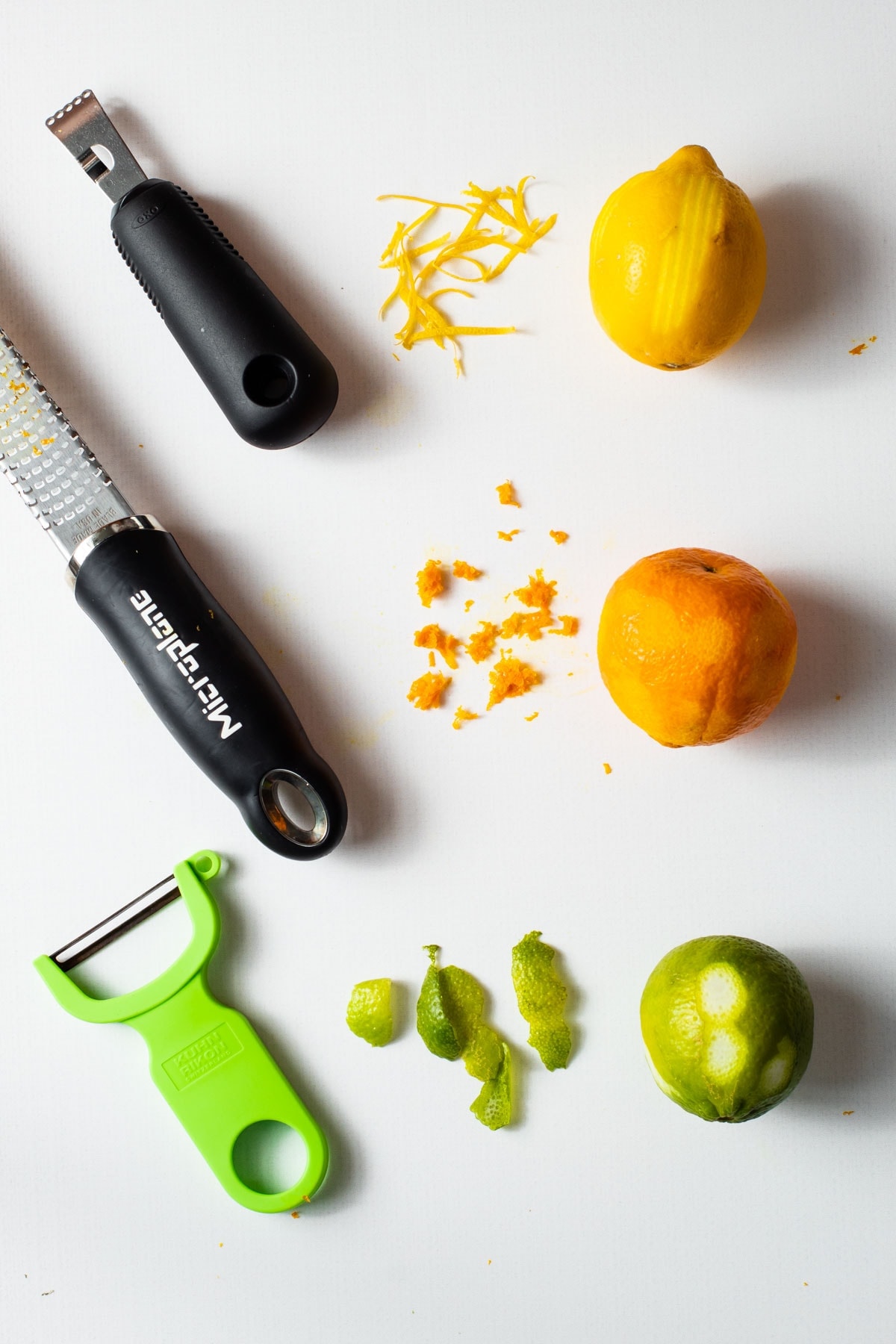
Zesting Tool Options
There are three main tools you could use to zest a citrus fruit, and one you likely already have on hand if you don't want to add any new tools to your kitchen collection.
Citrus Zester
A citrus zester is the most obvious tool to use when you are looking to zest a lemon or lime. However, depending on the recipe, it may not always be the best option. This tool is capable of creating two different types of zest. The small, sharp holes at the end of the zester can be used to create long strands of zest, while the secondary, small v-shaped blade on the side can be used to create thick pieces of zest that are perfect for making twists for cocktails.
Microplane
A Microplane is a type of grater that is long and thin and has small teeth that are perfect for zesting lemons and limes. This is the best tool for most recipes because it creates fine pieces of zest that don't contain any pith (like for this Lemon Curd recipe). This tool is incredibly versatile and excels not only at zesting citrus but also at grating garlic, ginger, cheese, and spices, making it a multi-purpose asset in the kitchen unlike a dedicated citrus zester.
Vegetable Peeler
A good vegetable peeler, especially these Y peelers, can do a great job of removing just the zest from citrus. However, it tends to remove the zest in large pieces, which may not always be suitable for certain recipes. If you need the zest to be in fine pieces, you will have to dice it up. Nonetheless, there are recipes that require large pieces of zest, such as infusions, and in such cases, a vegetable peeler might be the best tool to use.
How to Zest a Lemon without a Zester?
If you need to make zest but don't have the necessary tools, don't worry! You can use a sharp paring knife instead. Just use it in the same way you would use a vegetable peeler to remove large strips of zest from the citrus. If necessary, you can then finely dice the zest.
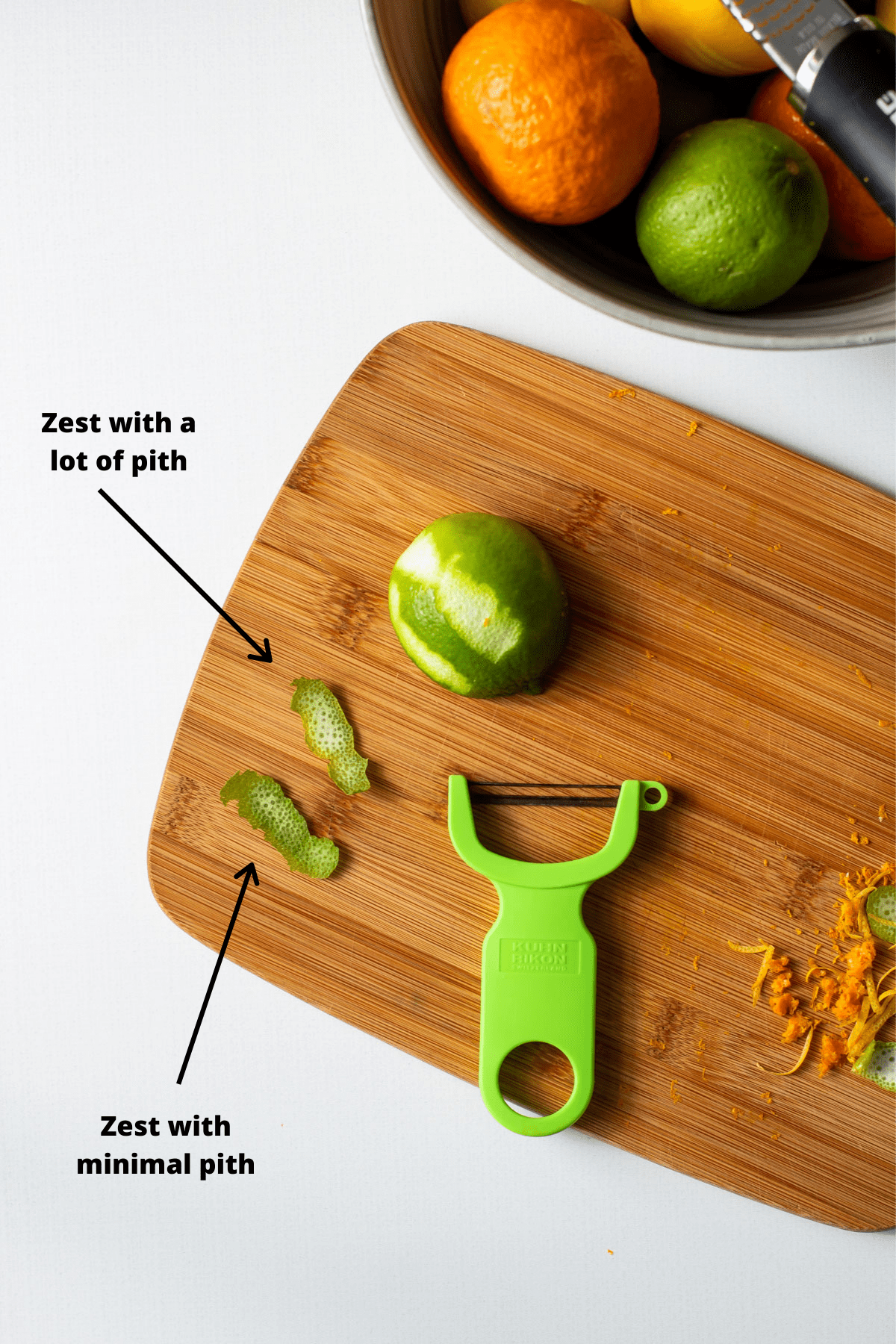
How to Avoid the Pith
There is one basic rule you should follow when it comes to zesting a lemon: make sure to only get the zest (the exterior colored layer) and not any of the pith (which is the white part). The pith will add an unpleasantly bitter flavor to your recipe, and it really doesn't contain any of that bright citrus flavor.
How to avoid the pith will depend on what tool you are using. In general, follow these guidelines:
- Make sure your tools are sharp (I generally replace my microplane every few years)
- Use gentle pressure with your tool so you don't dig below the zest.
- Make sure not to "double zest" the same section of the fruit.
Kelli's Best Citrus Zesting Tips
- Buy organic: If you know you are going to use the zest, it's best to buy organic citrus which will either have no wax coating on the fruit or a natural wax coating on the fruit. Also, the exterior of the citrus is where any non-organic pesticides would be located, so it's best to use organic citrus for zest when possible.
- Wash the fruit: You want to wash and dry the citrus well, preferably with very warm water and a scrub brush to remove any possible wax on the outside of the fruit.
- Avoid the pith: Even though I covered this above, it must be mentioned again. Do not zest the pith, just zest the colored outside layer of the citrus, and don't go over the same spot twice!
- Always zest first, before you cut and squeeze the citrus--it's just easier that way. This is key for this Lemon Meringue Pie recipe.
- To keep a zested lemon or lime fresh for a few days after it has been zested, cover it in plastic wrap and store it in the refrigerator. Once you zest a citrus fruit, it loses its protective coating and the interior will immediately start losing moisture.
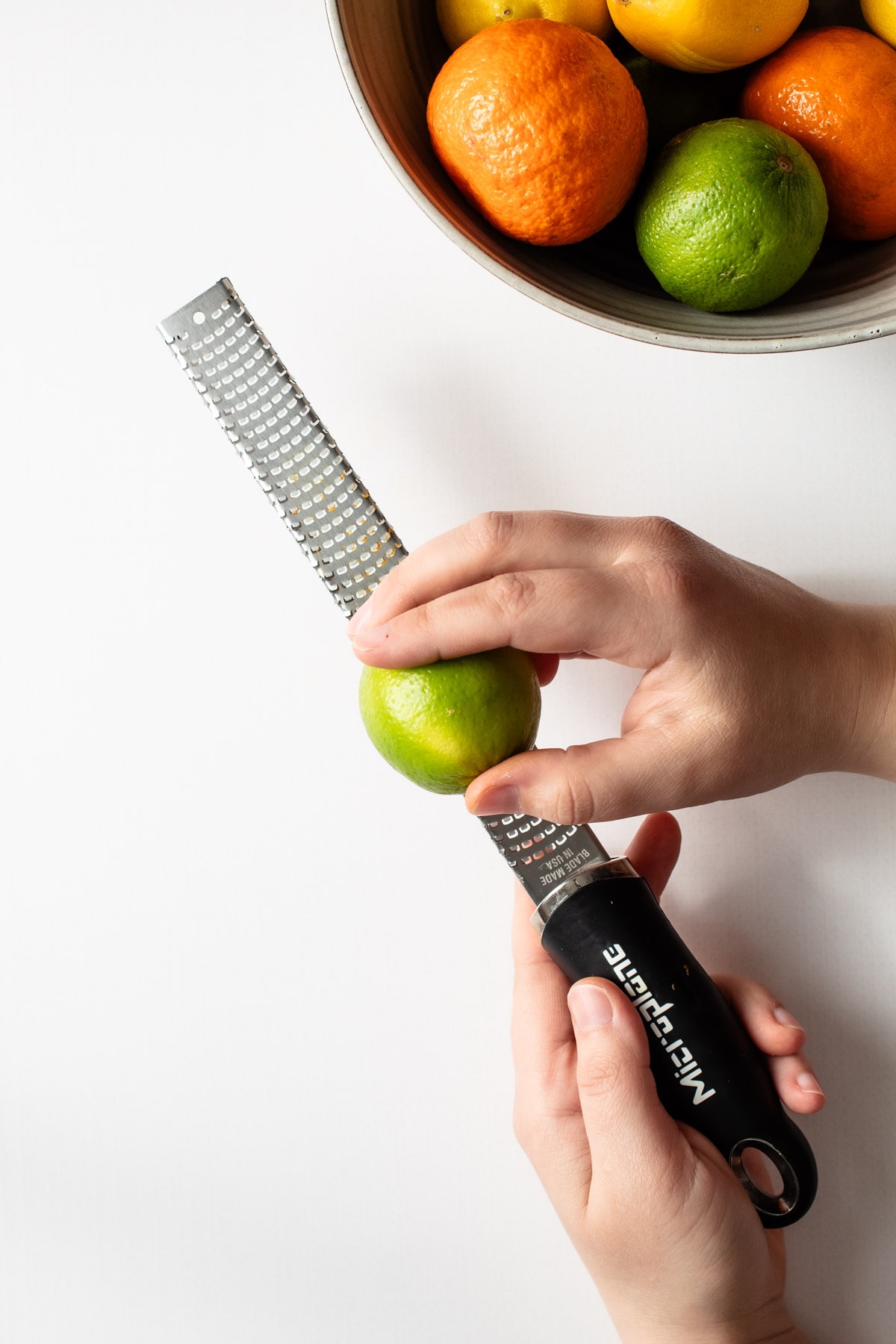
How to Use Zest in Recipes
When recipes call for adding zest, they often specify the quantity either as a measured amount (such as 1 tablespoon of lemon zest) or by indicating the number of fruits to be zested (such as zest of 1 lemon). However, both methods can lead to discrepancies in the final result.
In recipes that provide a measured amount, there can be variations in volume because zest is a wet ingredient that can be packed into a measuring utensil. Unlike ingredients like brown sugar, most recipes don't specify whether the citrus zest should be packed, so it's best to lightly fill the measuring spoon or cup to avoid adding an excessive amount of zest.
When a recipe calls for the zest from a specific quantity of fruit, such as one lemon, the amount of zest obtained can vary. On average, you can expect to yield about 1 to 2 tablespoons of zest from one medium-sized lemon. However, the size of your lemon can influence this measurement.
Overall, it's good to be mindful of these possible variations because zest is potent. Do keep in mind that a little bit of zest goes a long way and try to follow the recipe as best as possible.
It's also important to note the difference between raw and cooked zest and how it can impact a recipe. Essentially, you can add zest to anything both before and after it is cooked. Raw zest is ideal for dishes where you want a bright, intense citrus flavor, while cooked zest is excellent for adding a subtle, nuanced citrus undertone to cooked or baked dishes. The flavor of citrus will be stronger if you add it to a recipe at the end, such as a garnish. The flavor becomes slightly mellow when cooked.

Can Zest be Frozen?
Yes! If you find yourself in good fortune with an abundance of lemons, limes, or other citrus and are looking for ways to preserve the fruit for a longer period of time, you can freeze the zest (and the juice).
You can freeze the zest on its own, or you could freeze the zest in the suspension of another liquid. You can add zest to olive oil and freeze for future use of savory dishes. Or you could freeze it in melted sugar. Add a bit of water to sugar and let it dissolve, then add the zest to it. Either of these can be frozen in ice cube trays for single-use portions of zest.
Zest will lose its potency over time, starting at about the 1-month mark. So each month that it is frozen, it will become less potent over time.
More Tutorials
Full Recipe
How to Zest Citrus
Want to add citrus flavor to your cooking or baking? Zesting citrus is the best way to do it. Learn how to zest a lemon using three different tools as well as everything you need to know about zesting citrus.
- Prep Time: 00:01
- Cook Time: 00:00
- Total Time: 1 minute
- Category: Tutorials
Ingredients
- Citrus: lemons, limes, oranges or other citrus fruit
Tool Options:
- Microplane (or other grater)
- Citrus Zester
- Vegetable Peeler
- Pairing Knife
Instructions
- Wash and dry the citrus fruit.
- To zest using a microplane or other grater: in one smooth and firm motion, scrape the citrus over the holes. Continue this action throughout the entire fruit, but never going over the same spot twice. The finely grated zest will drop down on your surface below, and gather behind the microplane, so be sure to collect all of it.
- To zest using a citrus zester: Drag the sharp edge side of the tool (typically they look like small holes) in a line down the side of the fruit. Continue this action throughout the entire fruit, never going over the same spot twice. The long, thin strips of zest will fall to the surface below.
- To zest using a vegetable peeler: Using moderate to light pressure, drag the peeler along just the outer skin of the citrus. Peel off a small piece first to observe how thick the zest is, this step will ensure you do not remove any of the white pith. Adjust your pressure accordingly. Continue to remove all of the zest. This will result in long, wide strips of zest. You can use these to infuse oils or sugars, or you can use a knife to finely dice the large strips of zest into very small pieces.
- How to remove the zest with a paring knife: Using a very sharp paring knife, slice off a small piece of the zest first to observe how thick the zest is to make sure you do not remove any of the white pith. Adjust your pressure accordingly. Continue to slice off all of the zest. This will result in long, wide strips of zest. You can use these to infuse oils or sugars, or you can further dice the large strips of zest into very small pieces.
Some of the links on this page may be affiliate links. Everyday Pie is a participant in the Amazon Associates Program. As an Amazon Associate I earn from qualifying purchases, at no extra cost to you.


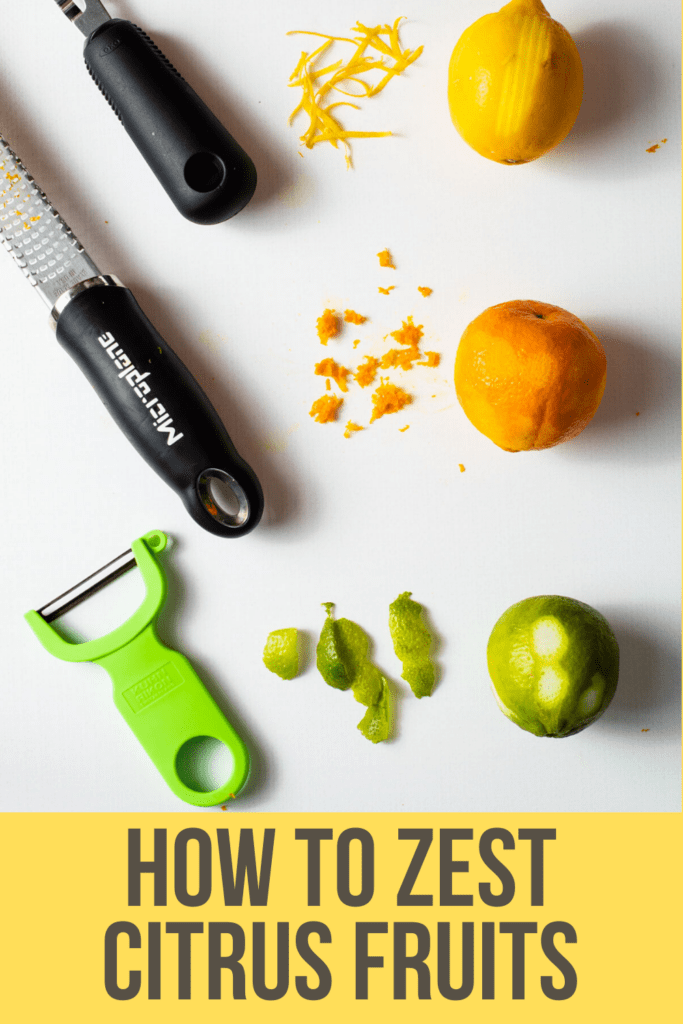
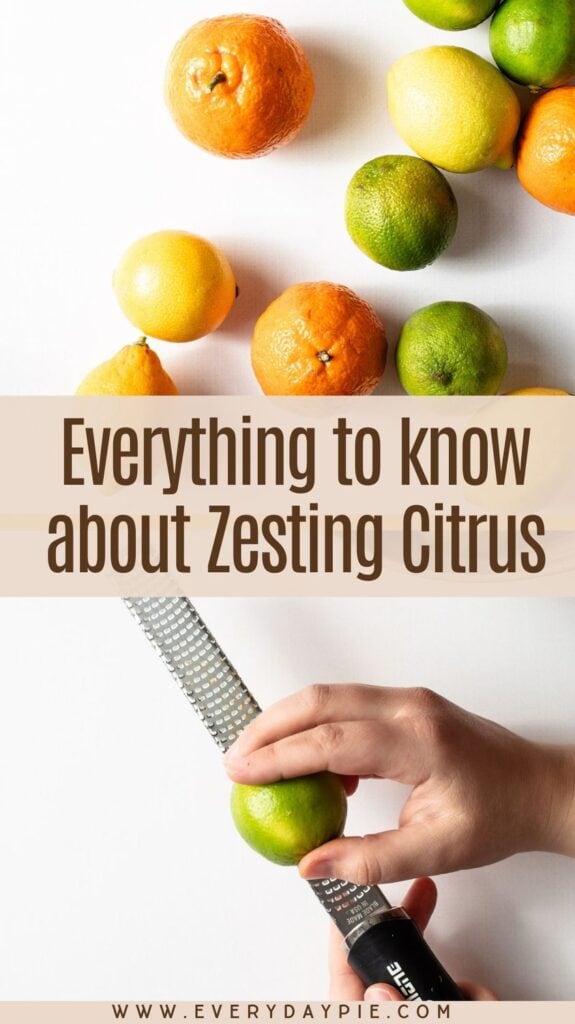
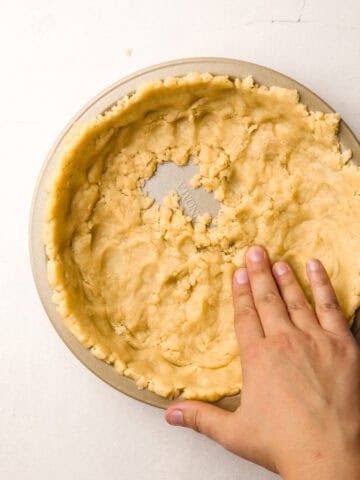

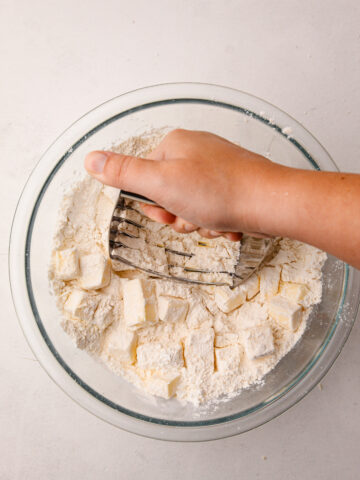
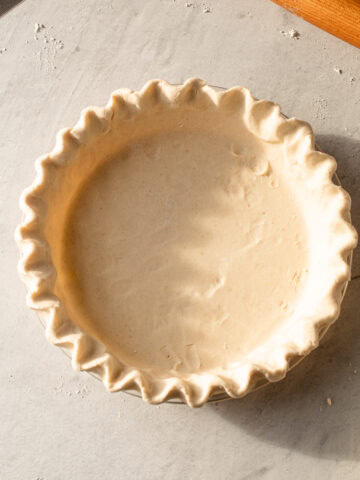
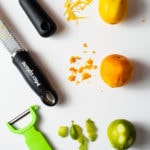
Branden Seyle
Great post, you have pointed out some excellent details, I also believe this s a very good website.
Edward Black
For as much as I enjoy cooking, and have for a long time, this is one gadget I’ve never owned. I *did* have a tiny little flat one for a while, though. My mom used to have one of the box variety, but I’m not sure if she uses it any longer or not. I should probably think about picking one up so this article will be useful when I do that. I especially like the 6-sided kind!
Cheryl
Useful post thank you!
Francesca
Used this tip while making your Coconut Lime Tart!!
Carly
Thanks so much, shared with my mother too.
Ben
I tried this with oranges for my orange creamsicle and it was perfect.
Jill
Great tips!!
Tricia
I’ve been doing it wrong all these years! Thank you!
Maria
Wicked helpful !!
Cristina
This is amazing! Can’t wait to zest my lemons!